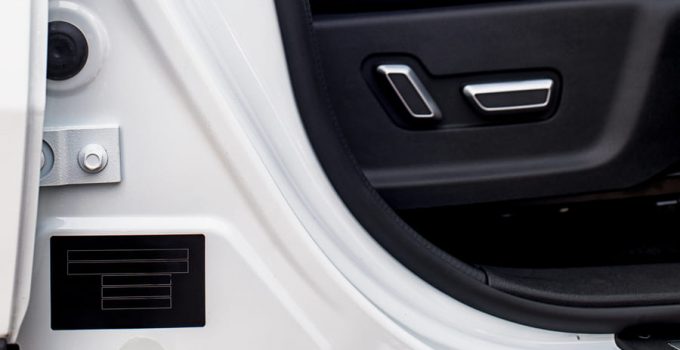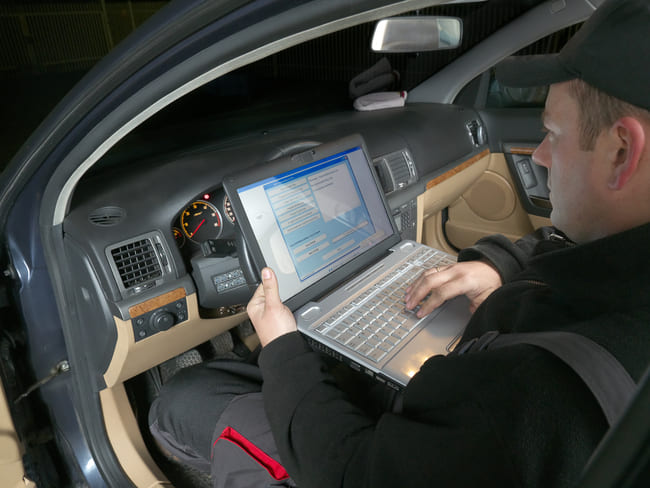
When buying a used car, you have probably asked yourself how you can actually know that the vehicle you want to buy is actually the right one. The seller will show you the vehicle registration document and the vehicle title, but who can actually guarantee that the papers actually belong to the vehicle and that you are not buying the wrong vehicle?
There is a vehicle identification number for that . This number can be found in the vehicle registration document, as well as in the vehicle registration document and on the vehicle itself. This means that when you buy a car you can rest assured that the two numbers match. If this is the case, you can rule out fraud by the car dealer.
You will certainly have come across the term vehicle identification number or VIN number (or VIN number) at the latest in driving school. However, many do not know exactly what this number actually stands for, where it can be found and what exactly it says about a vehicle. We are hereby explaining exactly what the vehicle identification number or VIN number is all about.
Contents
How is the VIN number structured?
The Vehicle Identification Number is a 17-digit serial number that accurately identifies the vehicle. There is the identifier of the manufacturer, such as WVW for Volkswagen vehicles, as well as a key number and a number that depends on the year of manufacture. The said number can be found in the vehicle registration document, but if this is not at hand, the number can usually also be found in the engine compartment of the vehicle. In order to rule out manipulation, the number is usually attached to different parts of the vehicle. The said number can either be found behind the windscreen, but also in the door pillar or, as already mentioned, in the engine compartment. To give an example of how the vehicle identification number is read, let's take a closer look at the following number:
WVWZZZ1JZ3W386752.
WVW refers here to the German manufacturer Volkswagen. ZZZ means here that these positions are not used. The model is indicated by 1J, in this case it is the Bora or the Golf IV. The 2003 model year is indicated by the digit 3. The letter W stands for Wolfsburg and indicates the place of manufacture and the remaining digits represent the number of the vehicle, which was manufactured in 2003.
Where can I find the vehicle identification number?
So that stolen vehicles cannot be resold so easily today, the VIN number is now stamped into the sheet metal, mostly in the engine compartment and on the dashboard under the windscreen, but also in the door entry area, and ultimately mostly in the trunk. In addition, the number can of course be found in both registration certificates.
It is also worth knowing that the vehicle identification number is also called the VIN number in international usage, which stands for Vehicle Identification Number. It is definitely a good idea to check the VIN number before buying a used vehicle. This means you rule out either buying a vehicle that does not match the manufacturer's specifications or buying a stolen vehicle that has already been reported to the police as stolen.
VIN number: good legibility is an absolute must
What you should definitely know: if the VIN number is no longer legible, be it due to the vehicle rusting away or due to an impact or serious accident, the vehicle is no longer permitted to operate. In this case, you should not waste any time and contact a workshop directly. Here the case is examined more closely and the number is re-stamped if necessary. After that, you should make sure to show the new stamping to the TÜV and then contact the approval authority. If you are not sure whether your VIN number is still legible, you should contact a workshop and have it checked. Have you bought a used car and aren't sure whether the vehicle you bought matches the papers at all? Then you should also check the VIN number. If this matches the papers, then you haven't made a bad purchase.

It is also possible to check said vehicle identification number on certain websites on the internet. Here you can find out which code stands for which information and have it decoded. With a trained look at the VIN number, important information can be read directly when buying a car. But the VIN number can also provide important information when maintaining the vehicle, as well as for service work and repairs.
Conclusion
In summary, the vehicle identification number protects a vehicle from a forged identity. A quick check of the VIN number on the vehicle registration document and on the vehicle itself and you can be sure that the documents and the car in front of you match. In this way, bad purchases can be avoided and fraudsters also have a harder time manipulating a car. In modern cars, the VIN number is therefore not only stamped in the engine compartment, but also in the door entry area, as well as on the dashboard and in the trunk. But the said number not only protects against fraudsters in the car trade. You can also use this number to register your vehicle, identify a car, find out the owner or give a car workshop information on the checkbook or the factory equipment of the car.
A tip from CarTipsandmore: Regardless of whether you are planning to buy a used car or if you already own a vehicle, you should take a look at the vehicle identification number on your vehicle documents and then attach it to yours with the number given Compare vehicle. Do you notice that the number on your car is no longer visible due to rust? You should then not hesitate and contact a workshop as soon as possible. A new stamping of the number is for your own security. If your vehicle is stolen, the VIN number can be used to identify the owner of the vehicle immediately. But the number can also be helpful if your car is due for a service, as it provides information about the equipment that was already installed in your vehicle from the factory. This can be important information for repair work. A tip from CarTipsandmore is therefore to always check the VIN number on your vehicle. It's worth it.
